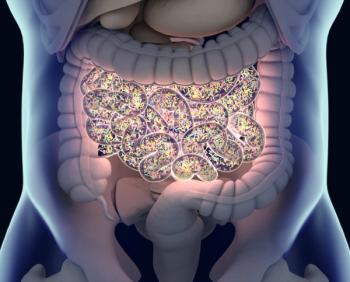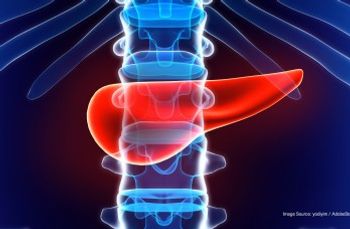
Additional results from the phase 2 IPAX-Linz trial will be reported at the 2025 Nuclear Medicine and Neurooncology Symposium.

Your AI-Trained Oncology Knowledge Connection!


Additional results from the phase 2 IPAX-Linz trial will be reported at the 2025 Nuclear Medicine and Neurooncology Symposium.

At the indication of the FDA and EMA, the phase 3 FLASH2 trial will further evaluate synthetic hypericin in early-stage cutaneous T-cell lymphoma.

The addition of chemotherapy to radiotherapy did not show significant improvements in OS when compared with radiotherapy alone in patients with intermediate-risk cervical cancer.

Results from the KEYNOTE-921 trial demonstrated that pembrolizumab with docetaxel did not elicit efficacy improvements vs placebo with docetaxel in prostate cancer.

Robot-assisted minimally invasive esophagectomies with anastomotic technique were completed without complications or mortality in a majority of patients.

Subgroup data from the IMROZ trial showed Isa-VRd improved survival and responses vs VRd alone in patients who were frail with newly diagnosed myeloma.

The developer will conduct a US feasibility test to evaluate the safety and efficacy of the SIRA RFA Electrosurgical Device in patients who require breast-conservation surgery.

Results from the phase 3 CheckMate 9DW trial of nivolumab/ipilimumab vs lenvatinib or sorafenib led to the approval for patients with unresectable or metastatic HCC.

The Integrated Palliative Care Outcome Scale showed the potential to guide palliative care integration to better help patients and clinicians after AHSCT.

Bevacizumab-nwgd was assessed to be comparable to bevacizumab based on a submission showing pharmacokinetic, efficacy, safety, and immunogenicity data.

The International Psycho-Oncology Society announced the first-ever WPOD on April 9, 2025, to bring more focus to psychosocial care in cancer therapy.

A phase 2 study found that treatment with tumor-infiltrating lymphocytes elicited a partial response rate of 15.1% in patients with gastrointestinal cancers.

The FDA approved nivolumab with ipilimumab in adult and pediatric patients with CRC based on data from the phase 3 CHECKMATE-8HW trial.

Palbociclib with endocrine therapy did not improve outcomes in hormone receptor–positive, HER2-negative breast cancer but improved invasive DFS in lobular disease.

Surufatinib/toripalimab elicited an ORR of 57.1% in patients with treatment-naïve NSCLC and 15.8% in patients with pretreated SCLC in a phase 2 trial.

A real-world analysis showed that 56 mg/m2 of carfilzomib once weekly offered many benefits over 56 mg/m2 twice weekly and 70 mg/m2 once weekly in myeloma.

Results from the phase 3 DESTINY-Breast06 trial demonstrated that trastuzumab deruxtecan (T-DXd) monotherapy improved progression-free survival over chemotherapy in patients with breast cancer.

Most patients with cancer who took part in a telehealth group expressed that they liked the members of their group and felt less social isolation.

The REMASTer trial found that laser interstitial thermal therapy was equivalent to open craniotomy regarding OS and PFS data in progressive metastatic brain tumors.

Muhammad Talwa Waheed, MD, found that resection after appendectomy should be prioritized in the treatment of patients with appendiceal cancer.

Tislelizumab plus chemotherapy demonstrated superior OS, PFS, ORR, and DOR results compared with placebo plus chemotherapy in first-line ES-SCLC.

Muhammad Talha Waheed, MD, stated that a retrospective study found an OS benefit in CRC peritoneal metastasis with cytoreduction surgery without HIPEC vs with HIPEC.

A phase 2 trial presented at SSO met its primary end point by achieving negative margins in 79% of patients with node-negative rectal cancer.

Results from the phase 3 ECHO trial showed PFS and OS improvements with acalabrutinib in the first-line treatment of MCL compared with standard of care.

Results from PSMAfore show that lutetium Lu 177 vipivotide tetraxetan elicited a median rPFS of 9.3 months vs 5.6 months with ARPI in prostate cancer.

Tisotumab vedotin elicited a median OS of 11.5 months vs 9.5 months with chemotherapy in advanced cervical cancer in the phase 3 innovaTV 301 trial.

CAN-2409 plus valacyclovir or acyclovir elicited a median OS of 24.5 months in the overall population of patients who progressed after immune checkpoint inhibitor therapy.

The blood test showed consistent, strong results in high-risk subgroups such as those with familial history, pancreatic cysts, or diabetes.

A cohort study found that pre-radical prostatectomy levels greater than 20 ng/mL were associated with increased all-cause mortality risk and prostate cancer-specific mortality risk.

The phase 3 ARTISTRY-7 trial has been halted and nemvaleukin is no longer being developed for the treatment of patients with platinum-resistant ovarian cancer.